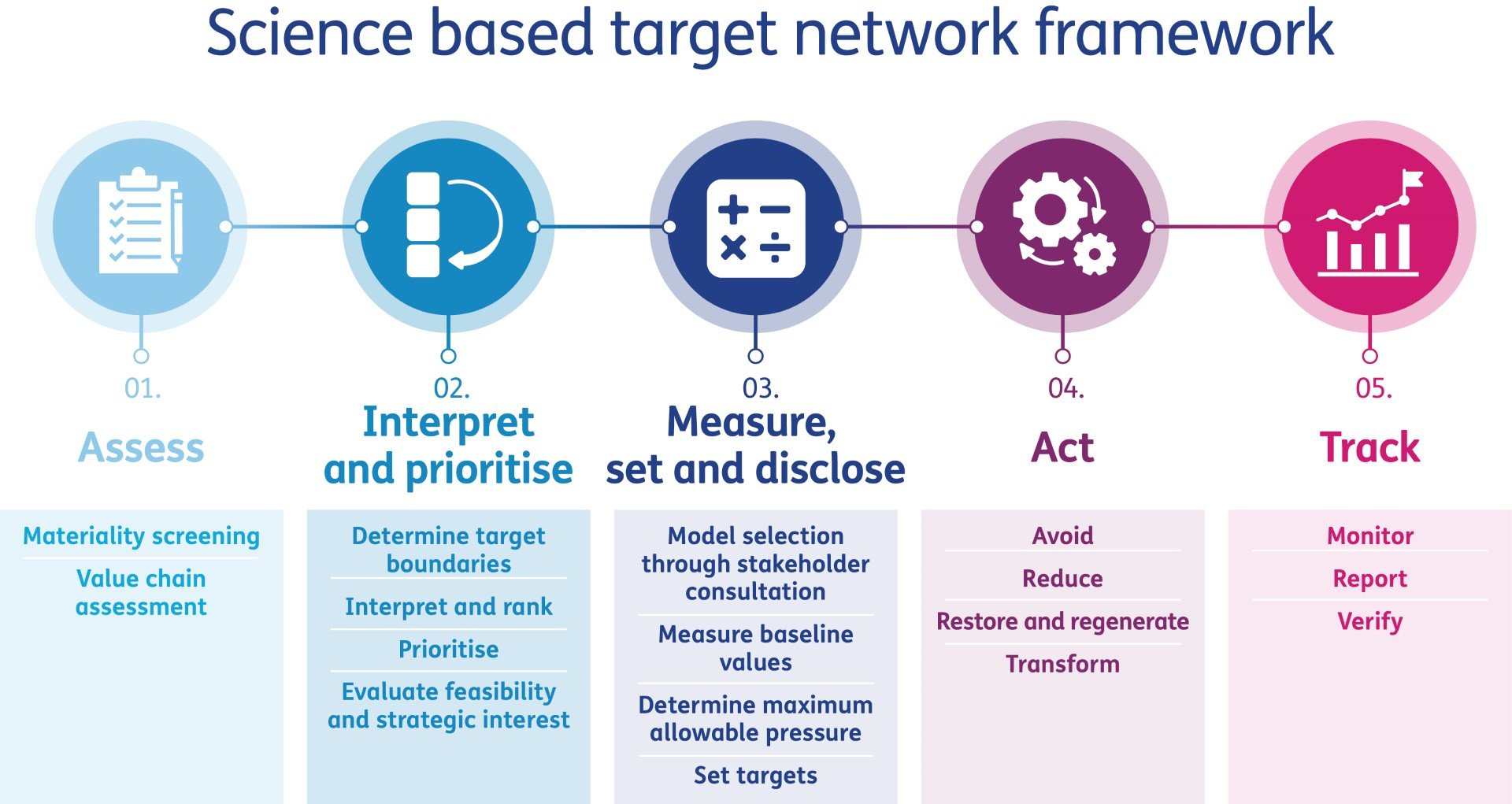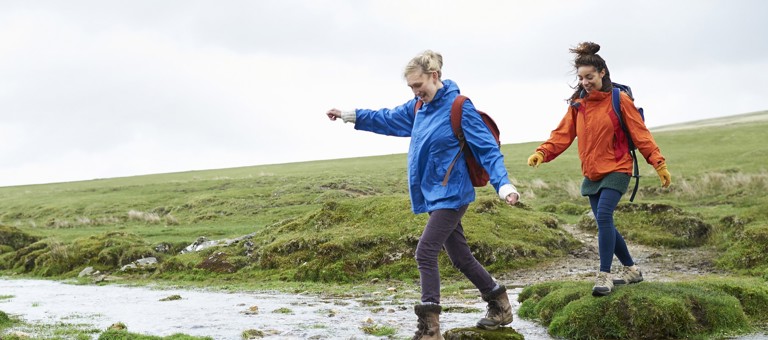Nature provides immense but often overlooked value to our economy. But now, as the ecosystem services that businesses have relied on for generations face rapid degradation, profitability is under visible threat. Research by the World Economic Forum shows that $44 trillion of economic value generation (more than half of the world’s total GDP) is moderately or highly dependent on nature and ecosystem services.
Fast-moving consumer goods companies (FMCGs) and retailers are no exception to this reality. While there’s an undeniable urgency for these companies to tackle biodiversity and ecosystem loss, their progress on nature remains slow. That’s in no small part due to the expansiveness of nature and the complexity of ecosystem dynamics making it incredibly difficult to quantify and address nature-related risks.
Given the sheer scale and rate of nature loss, change needs to accelerate. Organizations must set nature targets to demonstrate their commitment and make them science-based to demonstrate their sincerity to stakeholders including investors. By committing to science-based targets (SBTs), companies can take tangible, credible steps towards protecting nature. Science-based action will be at the core of how the world comes together to halt and reverse nature and ecosystem loss.
Organizations considering setting SBTs should also be familiar with the Taskforce on Nature-related Financial Disclosures (TNFD). As we explored in our earlier article, ‘Making the LEAP’, the TNFD is working to create a framework and assessment process – known as LEAP – for organizations to manage and disclose their nature-related risks. Its work is closely aligned with the Science-Based Targets Network (SBTN), which aims to provide companies with the guidance to set science-based targets for nature.
In this article, we explore why setting SBTs for nature should be a priority for FMCGs and how this can dovetail with efforts to adopt the TNFD’s nature-related risk reporting framework. We also share how organizations can take concrete steps towards meaningful action, following the guidance of the SBTN.
The SBTN and SBTs – a short introduction
The Science Based Targets Network (SBTN) aims to set the global standard for measurable corporate action to protect nature. As the nature-related counterpart to the Science Based Targets initiative (SBTi), the SBTN provides a methodology and guidance for corporations to assess and prioritize their environmental impacts and prepare to set SBTs.
The SBTN defines SBTs as “measurable, actionable, and time-bound objectives, based on the best available science, that allow actors to align with Earth’s limits and societal sustainability goals.” SBTs for nature complement existing climate targets, allowing companies to make the transition to a net-zero, nature-positive economy which recognizes these issues are interconnected.
The benefits of a science-based approach
SBTs’ scientific approach deepens an organization’s understanding of its impacts and dependencies on nature and helps to refine and prioritize the actions it takes to meet nature- related targets. This clarity makes it easier to take action and start realizing the benefits of a science-based approach, including:
- Getting ahead of regulation and policy changes. Governments and regulators are pushing for ambitious upstream value chain assessments, including high-impact commodities. The EU’s new Deforestation Regulation, for example, is an early signal that European supply chains of cocoa, coffee, soy, wood, palm oil, rubber, and cattle need to prepare for closer due diligence. Against this backdrop, setting SBTs can be an effective mechanism for getting ahead of the curve and building leading capabilities.
- Increasing the confidence of investors and strengthening reputation among customers, employees, and society. Pressure on businesses to act on nature loss only continues to grow – not only from regulators and end-customers but also investors and value chain partners. Investor-action movements like the Nature Action 100 list and the Principles for Responsible Investment (PRI) Spring initiative are raising expectations for corporates to commit to halting and reversing nature loss. With targets, especially anchored on SBTs, companies can send a strong signal to stakeholders that they’re taking meaningful steps to act on nature targets.
- Improving medium-to-long-term profitability. Setting SBTs for nature has the potential to generate tangible quantitative business outcomes. For instance, companies can achieve cost savings through enhanced water use efficiency, and the management of scarce resources gives clear evidence we have exceeded multiple planetary boundaries. Similarly, having credible nature targets should lead to easier access to future credit and financing opportunities.
- Catalysing innovation that’s good for business and the planet. The long-term nature of SBTs provides a clear direction of travel and can offer insight into important market trends that will be shaped by the nature-positive transition. This clarity can incentivize businesses to develop and invest in innovative solutions that support biodiversity gains while creating competitive advantage and new revenue streams.
Why companies should commit to SBTs – insights from our consumer products and retail experts
Consumer products manufacturers and retailers have an undeniable impact and reliance on nature – making it even more urgent for the sector to take material action towards halting and reversing biodiversity loss and environmental degradation.
The Ellen MacArthur Foundation estimates that in the EU and UK, 40% of agricultural land use is influenced by the top 10 FMCGs and retailers. The sector also relies heavily on the direct extraction of resources from forests and oceans, as well as the provision of ecosystem services such as clean water, pollination, and a stable climate to create inputs for products.
Packaging, and in particular plastic packaging, is a prime example of FMCGs’ outsize impact on the environment. Plastics Europe notes that 40% of total plastic demand goes towards producing packaging for the end-use market in Europe. Not only does packaging consume vast amounts of natural inputs – most notably fossil fuels for most plastics, it also generates huge amounts of waste. As part of a sector that relies heavily on packaging and plastics, consumer products and retail companies have an opportunity to transform the way they make, use, and dispose of these products.
FMCGs and retailers are also highly dependent on Earth’s ecosystems. According to the World Economic Forum, more than 50% of the gross value added (GVA) of consumer products and retail companies’ supply chains is highly or moderately dependent on nature. As biodiversity loss and environmental degradation advances, companies can expect their operations, supply chains, and markets to feel the impacts:
- Shortages of raw materials and natural resources affect production capacity, cost, and business continuity. The effects of biodiversity loss and ecosystem damage – whether it’s changing rainfall patterns, the emergence of new diseases and pests, floods, or wildfires – all threaten the productivity and availability of agricultural inputs.
- Manufacturing facilities and distribution systems are at high risk of losses to ecosystem services. For example, water issues – including stress on access, quantity, and quality – are likely to impact the stability and reliability of supply chains. Likewise, increased risk of natural disasters like floods and wildfires in key sourcing regions can have physical, regulatory, and reputational impacts on a business and its supply chain.
- Nature loss and climate change affect consumer preferences and purchasing behaviour. Consumers increasingly demand more sustainable products and packaging and show growing concern about environmental degradation and waste. Sustainability attributes have risen on the list of consumer loyalty drivers and switching motivators. If faced with rising resource and economic constraints in the future, consumers may also curtail spending or change the types of products they seek out.
How the TNFD and SBTN intersect
While the TNFD and SBTN are two separate frameworks, they are intended to be leveraged in tandem to navigate the complexities of setting nature-related targets.
Understanding the intersections between TNFD and SBTN is important for organizations looking to optimize their efforts around setting and disclosing targets for nature. Both frameworks emphasize the necessity of evaluating a corporation’s nature-related dependencies through an ‘assess’ step. Whilst the SBTN’s guidance is more prescriptive on how to set targets as a whole, the LEAP elements of the TNFD’s framework can also be leveraged as a crucial foundation for setting SBTs.
Organizations using the SBTN’s methods will generate data and analytical outputs that can be used to apply parts of the TNFD’s LEAP approach for the assessment of nature-related issues. Conversely, applying the LEAP approach can help companies generate the data needed to set SBTs for nature.
For its part, the SBTN has outlined a five-step framework intended to guide companies in setting, implementing, and tracking progress on SBTs. The steps include 1) assessing a company’s biggest environmental impacts, 2) interpreting and prioritising the results, 3) measuring, setting and disclosing targets, 4) acting to reduce current impacts and avoid future ones, and 5) tracking progress towards targets.

Diagram reference: Frequently Asked Questions – Science Based Targets Network – section labelled ‘How can my organization set SBT’s?’
Now is the time for bold action
As we near the midpoint of the UN’s ‘Decade of Action’, time is running out to halt and reverse nature’s decline. To meet nature goals and make the most of the opportunities afforded by a nature-positive transition, including stakeholder confidence, supply chain continuity, increased availability of raw materials and accelerated innovation, Consumer Products manufacturers and retailers need to move from intention to action. Setting targets for nature demonstrates commitment, whilst making them science-based shows sincerity – two things that our planet needs from us in urgent measure.
Companies now face a clear choice on whether or not to get started on setting targets for nature. Our team supports organizations in taking this first step by: defining scope using our Biodiversity Framework to understand maturity, building organizational capability to map nature across the value chain and assessing nature related risks supported by tools such as our water risk assessment framework.
If you’d like to learn more about the best ways for your business to approach nature-related risk management and reporting, please reach out to our team for more information.
Related Insights

Going beyond carbon: sustainable value chains
Clients, thought leaders and trailblazers across multiple industries joined us for a discussion on the future of green business practices.
Read more
Talkin' bout a rights and royalties revolution
We explore how emerging blockchain and non-fungible token (NFT) applications are shaking up contracts and rights and royalties' models.
Read more
Rights and royalties: creators at the core
We explore how leading rights and royalties approaches will enable new generations of creators to thrive and monetise ever more high-quality content.
Read more
Mapping fan experiences to an organisation's rights and royalties capabilities
Rights and Royalties is the strategic foundation of a content organisation and a key enabler of engaging fan experiences.
Read more